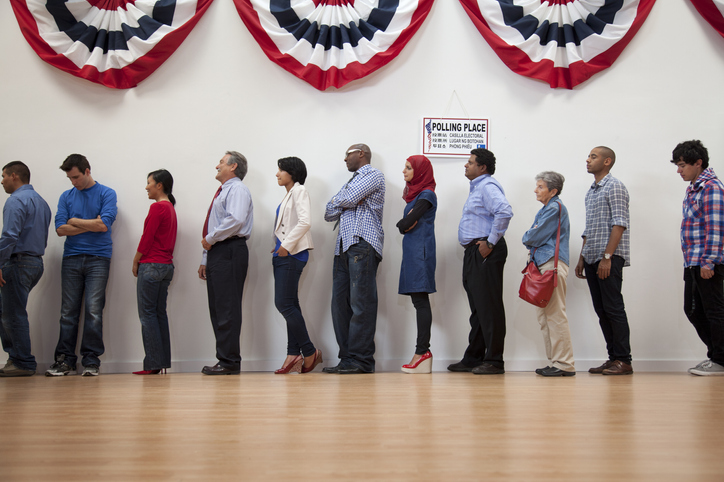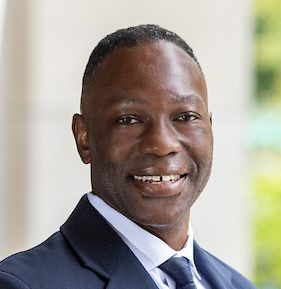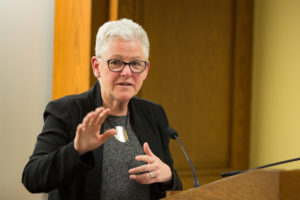
True representative democracy depends on making access to voting a realistic option for all.
The fundamental task for American democracy today is to create an inclusive political order.
An inclusive order includes everyone. It fundamentally entails creating a political and constitutional structure that takes seriously the right to vote and assures that right is not undermined for any group, whether on the basis of race, ideology, or geography. The future of voting rights law and policy should focus on developing a new political and legal consensus in which voting is regarded as a universal and fundamental right, made available to all.
Throughout U.S. history, race and political power have long been interrelated. Structural political inequality and structural racial inequality have been mutually reinforcing, so solving racial discrimination in voting will require a vigorous commitment to resolving political inequality—and vice versa. In other words, commitment to political equality must include a commitment to eradicating racial discrimination in voting. To eradicate discrimination in voting and achieve real political equality, election law must become centralized and nationalized. States should thus be precluded from regulatory practices that undermine inclusiveness and political equality.
In an inclusive political order, the current conception of state sovereignty in setting election rules has no role to play. That current conception holds that a state can effectively discriminate on the basis of race because the only way to stop the state is by proving it acted on the basis of a racial motivation.
In effect, election law today allows a state to engage in a kind of legal arbitrage in its election rules. If states can justify election rules on the basis of politics or political ideology, even though these two things can be interrelated with race, the Court will not say anything about what the state has done. This practice must change. State governments should not regulate the elections franchise in ways that keep it from being effective for anyone. The franchise should be effective for all, and state governments should not be allowed to change voting rules to make it harder for citizens to vote on the basis of race, party, or other ideological grounds or impose other barriers to political participation. Only then can the United States break free of the ways in which structural political inequality and structural racial inequality are intertwined
Perhaps no other U.S. Supreme Court case as vividly presents the important symbiotic relationship between structural political inequality and structural racial inequality as does Gomillion v. Lightfoot, decided in 1960. In that case, the Supreme Court struck down on Fifteenth Amendment grounds the Alabama legislature’s decision radically redrawing the electoral district for the city of Tuskegee to exclude Black people from the voting pool. A quick look back at that case helps map out the possibilities for thinking about how to deal with racial discrimination today. This examination can reveal insights about what is needed in the wake of efforts by many recent state legislatures to regulate the voting process in ways that purport to be based on grounds other than race, but which serve only to reinforce structural racial inequality.
Gomillion posed an epistemic challenge for civil rights advocates. They had to prove that the redrawing of the boundaries of Tuskegee was a racial gerrymander—a segregation of the races—and not a political gerrymander or simply a remapping of the municipal boundaries. A racial gerrymander would have been unconstitutional, but a political gerrymander, or a mere change in the municipal boundaries, was within the state’s sovereign power under the law of the time.
Although the state statute in Gomillion did not say anything about race, or really anything other than latitude and longitude of the electoral district for the city of Tuskegee, there was no doubt that the remapping of Tuskegee was a blatant racial gerrymander. Sam Engelhardt, the state senator who authored the statute in the Alabama legislature, was crystal clear about the statute’s purpose. He said he wanted to exclude colored voters who might become the balance of power in Tuskegee city elections.
But according to the existing legal doctrine of the time, state legislators’ motivations, as long as they did not appear evident in the terms of the statute, were not a relevant consideration for ascertaining the constitutionality of the statute. So, unless the plaintiffs could convince a court and the Supreme Court to take motive into account, or that the redrawing of the lines was a racial gerrymander, the courts would defer to Alabama, as they did in both the district court and the U.S. Court of Appeals in Gomillion. These lower courts deferred to the state’s argument that, as long as the state was not expressly engaged in racial discrimination, its sovereign right to implement its own conception of political equality ought to be respected.
Although Gomillion’s lawyers did not have much admissible evidence showing racial motivations, they did have the redrawn map showing the new boundaries of Tuskegee. The map itself illustrated the egregiousness of the state’s racial discrimination. Look at the map, the civil rights lawyers urged when the case reached the U.S. Supreme Court. The lines of the map represented how Alabama removed almost every single registered Black voter from the City of Tuskegee but not a single white person, much less a white voter. The jagged lines of the map made clear that this was not a normal redrawing of the municipal boundaries. After being redrawn by the state legislature, Tuskegee had gone from basically a large square to a much smaller 28-sided town. The new map removed every single one but four or five Black registered voters from the confines of the city. The state’s exclusionary purpose and effect was revealed by the map.
Everyone knew what the state was doing: preventing Black people from being able to register and to vote. Tuskegee was a racial oligarchy. Before the line redrawing, the majority population in Tuskegee was Black, outnumbering white people five to one. But white people held all the political power. No Black people held an elected position at any level in the city or county.
Legally, the challenge for the plaintiffs’ lawyers in Gomillion was getting around the state’s reliance on the theory of state sovereignty. That theory shielded the state’s voting discrimination against its Black citizens under the cloak of neutrality. The state argued that the redrawing of Tuskegee’s borders was just that: It was a map that drew new boundaries of a subsidiary of the state. It did not separate the races upon its face. Alabama even argued that lawsuits about political boundaries were nonjusticiable because they raised questions that the federal courts did not have the power to decide. The state’s arguments in Gomillion contained the seeds of what has become the modern legal framework, in which the Court declared in 2019 that challenges to gerrymandering are now nonjusticiable.
Gomillion vividly reveals the symbiotic relationship between structural political inequality and structural racial inequality. Alabama’s plan to remove Black residents from Tuskegee was possible and submissible only because the Constitution allowed the states to create unequal political units. The Court had not been interpreting the Constitution to require states to create political units that weighed votes equally. Instead, the Court had allowed states to create oligarchies.
Alabama was thus subject to two different constitutional regimes: one that required it to grant its citizens equal suffrage rights on the basis of race, but another that allowed it to do whatever it wanted with citizens in its political units. In the first, the state was regulated, and, in the second, it was unregulated
Correspondingly, Black citizens were also subjected to two different types of legal regimes. If they were categorized on the basis of their race, they were entitled to equal suffrage rights. But if they were categorized by geography, political unit, or political party, they could then be treated unequally.
These different regimes presented Alabama with an arbitrage opportunity. The constitutional system would prevent Alabama from denying suffrage rights to Black people, but would not prevent Alabama from favoring one set of political units over another. Alabama could still achieve its racially discriminatory aim—oppressing the voting rights of its Black citizens by placing them in disfavored political units. The state simply needed to convince the federal courts that the Constitution gave it the right to elect between two different regulatory regimes. And so long as Alabama could shield its racism behind the veil of state sovereignty, despite what everyone knew was going on, Alabama could maintain both its racial and political oligarchy
But racial oligarchy and political oligarchy are intertwined, and it is hard to have one without the other. In Gomillion, the question was whether the federal courts were willing to go along. They almost did—until the case reached the Supreme Court. The Court ultimately rejected the approach taken in the lower courts and decided that the unconstitutional racial purpose was evident from the map itself. It held that the Fifteenth Amendment barred the redrawing of Tuskegee’s boundaries in a way that removed virtually all its Black voters.
Nevertheless, Gomillion demonstrates the challenge that plaintiffs face today when bringing voting equality claims because of the legal system’s default presumption of plenary and legitimate state power. The law in many respects still views state authority as presumptively legitimate. When the state regulates on the basis of its authority to structure its local electoral process, the courts tend to defer. In part, they do so because claims of racial discrimination can raise significant epistemic uncertainties; the questions can be very complicated. Is a voter ID requirement a racially discriminatory device? Or is it simply the state deciding for itself what to do with its local system?
Gomillion presented a multifaceted puzzle that has long bedeviled the courts. How should constitutional law respond to the intersection of structural racial and political inequality? Law and politics jurisprudence has generally offered four approaches when confronted with structural political and racial subordination.
The first approach is pure and unquestioned judicial deference to the state’s supposed sovereign right to determine its voting rules and arrange its electoral institutions in any manner consistent with the state’s values. This total deference approach rarely acknowledges either racial inequality or political inequality.
The second response is to acknowledge racial inequality but nevertheless defer to the state on plenary power grounds.
The third approach defers to the state on the theory that any racial inequality claim is, at bottom, a claim about political power and therefore indistinguishable from a claim of unequal political power.
Lastly, there is the approach of race exceptionalism, which is the argument that racial discrimination is an exception to the state’s plenary powers. A state’s officials can do whatever they want, and the courts will defer to them—except when they are engaged in racial discrimination. This is the approach taken in Gomillion, where the Supreme Court decided that clear racial discrimination violates the Constitution even where the state has the right to structure its political framework in a manner it sees fit.
There is, though, still a fifth possible approach. But this approach has rarely found support in the courts. It concedes that structural racial inequality and political oligarchy are mutually symbiotic. Both types of inequality grow from each other, and the harm caused by one type is compounded by the other. Precisely because the harms caused by both types are compounded by their co-occurrence, they both require congressional or judicial oversight of state electoral policies. This approach is the one I recommend.
It is also an approach reflected in the Voting Rights Act (VRA), which was itself influenced by this idea that political equality and racial inequality are intertwined. For 50 years, the VRA provided the regulatory framework that placed the question of voting inequality at its center. Even though the Fifteenth Amendment was nominally the fundamental law of the land, the VRA gave promise and life to the Fifteenth and the Fourteenth Amendments and began to deliver on the implicit guarantees of self-rule under the Fourth Amendment. The VRA brought the South into the fold of representative democracy and signaled to the nation that a new era of both racial and political equality was at hand.
That regime ended in 2013 with the Supreme Court’s decision in Shelby County v. Holder, in which the Court struck down Section 4(b) of the VRA, the provision that identified the jurisdictions required to obtain preclearance, and also sidelined Section 5 of the VRA, the provision that required preclearance. Section 5 of the VRA said that any state or locality subject to Section 4 had to preclear changes related to voting. The Court’s decision in Shelby County, although not a surprise to voting rights experts, ended a regulatory framework in which racial discrimination was placed front and center in the regulatory firmament. From the Court’s perspective, the VRA violated the conception of state sovereignty, the same basic idea that it had earlier rejected in Gomillion.
Shelby County thus effectively ended a regulatory regime that aimed for political inclusiveness, and its aftermath led to the current deregulatory world. The question, then, is where the United States ought to go from here?
The future of voting rights law should be grounded on full inclusivity and equality. Everyone’s right to vote must be taken seriously—and conceptions of state sovereignty have no role to play in such a future. Neither the public nor the legal system should allow the government to regulate the franchise in ways that diminish its efficacy.
We need to mobilize today around the vision of inclusivity in much the same way that protest movements mobilized to bring about the VRA. Black activists saw the VRA as a means to remake the racial order by remaking the political order. That protest movement changed not only politics but also constitutional law. The task in the post-VRA world is to take the lessons learned—namely, that there is a strong relationship between racial hierarchy and political oligarchy—and move forward toward a vision of a new world of equality.
What does this new world look like? It looks like two new statutes that have been proposed in Congress: the For the People Act and the Freedom to Vote Act. If you look at the Freedom to Vote Act, for example, it takes voting seriously as a fundamental right. It attempts to articulate best practices in organizing inclusive elections and then nationalizes those practices. It undermines the conception of state sovereignty in which the state has the right to create its political structure as it sees fit. It recognizes that the right to vote belongs to citizens, so it makes certain that everyone has access to practices such as early voting, mail voting, and no-excuse absentee balloting. It prevents partisan gerrymandering, provides remedies for vote certification, and modernizes voter registration. It recognizes the fundamental goal of making voting and political participation an important aspect of democracy.
To move forward in the 21st century, society must recognize that political equality and racial equality are mutually reinforcing and one cannot exist without the other. Admittedly, the U.S. public is extremely divided today and too many states are still engaged in discrimination on the basis of voting—whether on the basis of partisanship, race, or a combination of the two. And with current patterns of gerrymandering and redistricting in today’s deregulatory environment, there are certainly reasons to be pessimistic.
But on the other hand, for the first time in a long time, a strong segment of the population wants to tackle not just voting equality questions, but also questions of electoral structures: the Electoral College, the composition of the Senate, different ways of organizing an alternative voting system. Today, all these issues are on the table. In addition, many jurisdictions have adopted same-day registration, early voting, and other best practices that make it easier for people to participate in elections. As a result, even though there are surely reasons for despair today, thinking about how far the United States has come in terms of political participation and anticipating where it might be five, ten, or fifteen years down the road, well, who knows? There is possibility for hope.
The question then becomes: How does the United States move beyond the present deregulatory posture of federal law and build a social movement for the purposes of making the legal change needed to ensure full democratic inclusiveness? I see that we need to build a new movement worthy of the civil rights movement that led in the mid-1960s to the Civil Rights Act and the Voting Rights Act. It is ultimately up to us to make that happen. It is up to us to move the ball forward to make political power and representative democracy true for everyone and for all of us.
This essay is based on remarks delivered at the Annual Distinguished Lecture on Regulation at the University of Pennsylvania Law School on November 2, 2021.




